The Stories You Must Know
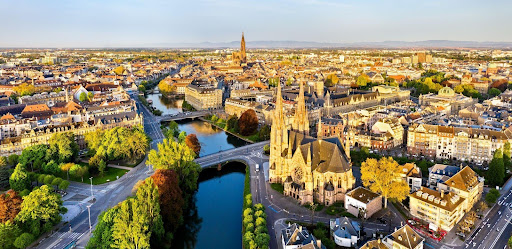
Landmarks in France are not just monuments, but they are a symbol of the country’s historical significance. Among the European countries, France is the top-visited place by tourists all across the world. The country has its rich culture, and its unique lifestyle and fashion have been a symbol of an icon and a paradise for most women. However, the monuments in France have their significance, which have stood the test of time, surviving two world wars, exhibiting the country’s resilience during the darkest days. If you are a lover of European history, then you must visit and explore France to gain more information to plan your trip. While you travel, just being connected is more important. With eSIM World, travellers can have non-stop connectivity using eSIM Europe in France, perfect for navigating and finding different landmarks in France. In this article, let’s have a deeper look at how history and the stories behind it.
From the Kings to the Revolution, let’s see what story these 5 historical landmarks in France would tell us.
| Monument | Built In | Historical Role | Architectural Style | Must-SeeHighlight |
| Eiffel Tower | 1889 | World’s Fair | Iron lattice | Summit panoramic view |
| Sainte-Chapelle | 1248 | Royal Gothic chapel | Rayonnant Gothic | Stained glass windows |
| LuxembourgPalace | 1615 | Royal, then political seat | French Classical | Garden and museum |
| Arc de Triomphe | 1836 | Napoleonic military monument | Neoclassical | Tomb of the Unknown Soldier |
| Palace ofVersaillers | 1682 | Royal residence of Louis XIV | French Baroque | Hall of Mirrors |
A Story in Iron: The Eiffel Tower’s Origins
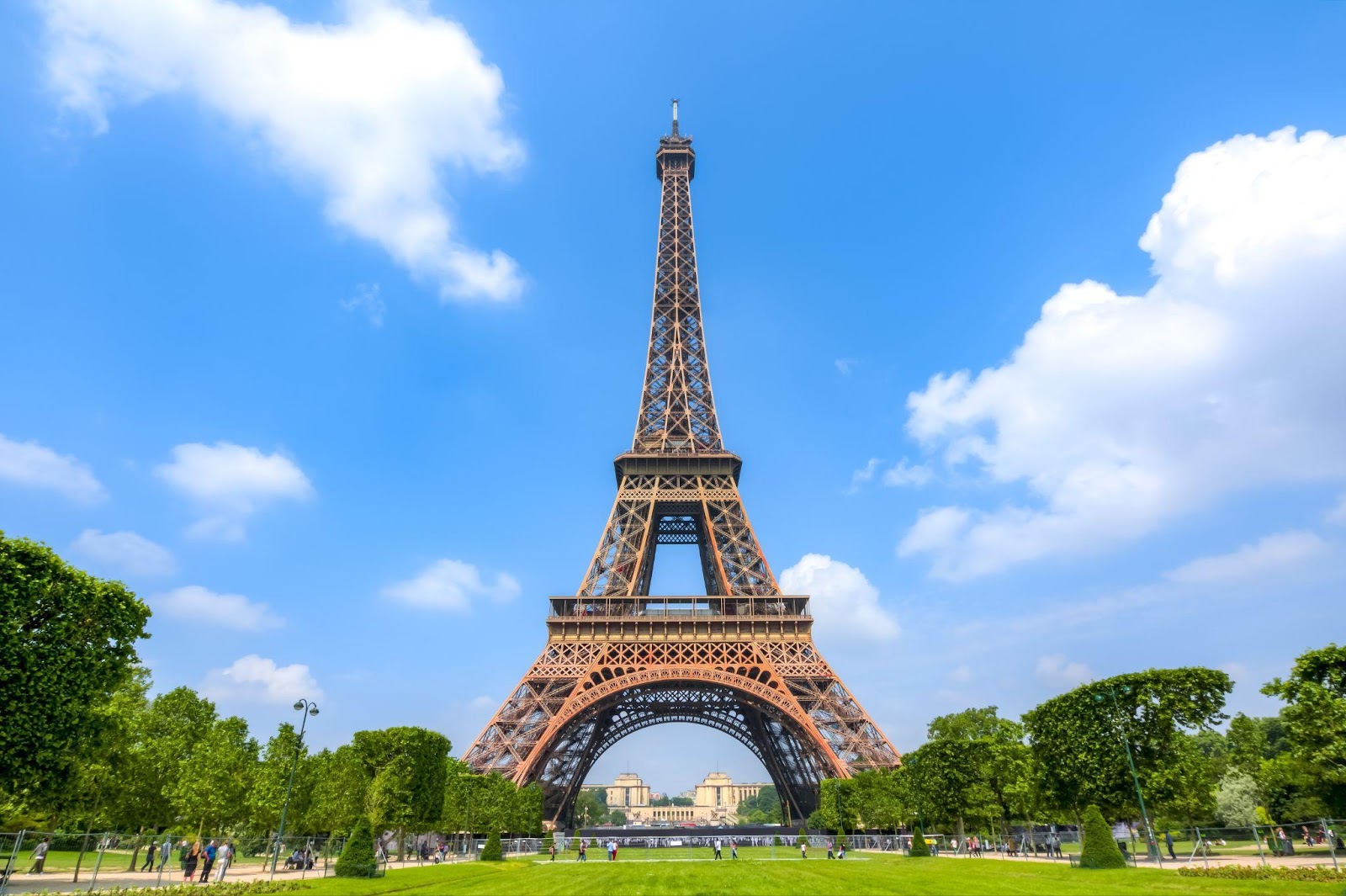
When we think of a Landmark in France, the first thing that comes to our mind is the Eiffel Tower. Its magnificent appearance has been the iconic symbol of Paris and France for more than a century. Little did we know that this Iconic landmark in France had its own survival battle early at the time of its inception. For the celebration of the 100th anniversary French Revolution, the Eiffel Tower was proposed to be built for the 1889 Exposition Universelle (World’s Fair), designed by engineer Gustave Eiffel and his team. Today its stands among the grand monuments in France, but the initial reaction to the construction was negative. Parisians, especially within the communities of artistic and intellectual communities considered it a clash between the image of Paris to that of its elegant and historic architecture. Critics described it as a monstrous iron structure, a giant factory chimney, or a tragic giant lampost that would ruin the city’s beauty. Some even went to the extent of taking legal action to bring the structure down. On the other hand, the curiosity increased among visitors of Paris, Eiffel tower in Paris played a central role as the prominent piece of exhibit for the 1889 World’s Fair, helping it to transform itself from a subject of ridicule into a celebrated icon of Paris and even today it stands as the most visited landmarks in France.
Interesting Facts
- The Eiffel Tower was supposed to be demolished after 20 years
- The Eiffel Tower was the tallest building in the world once, but not anymore
- It’s Illegal to take a picture of the Eiffel Tower lit up
- Depending on the weather, the Eiffel Tower shrinks and expands
The Crown, the King, and the Glass: The Story Behind Sainte-Chapelle
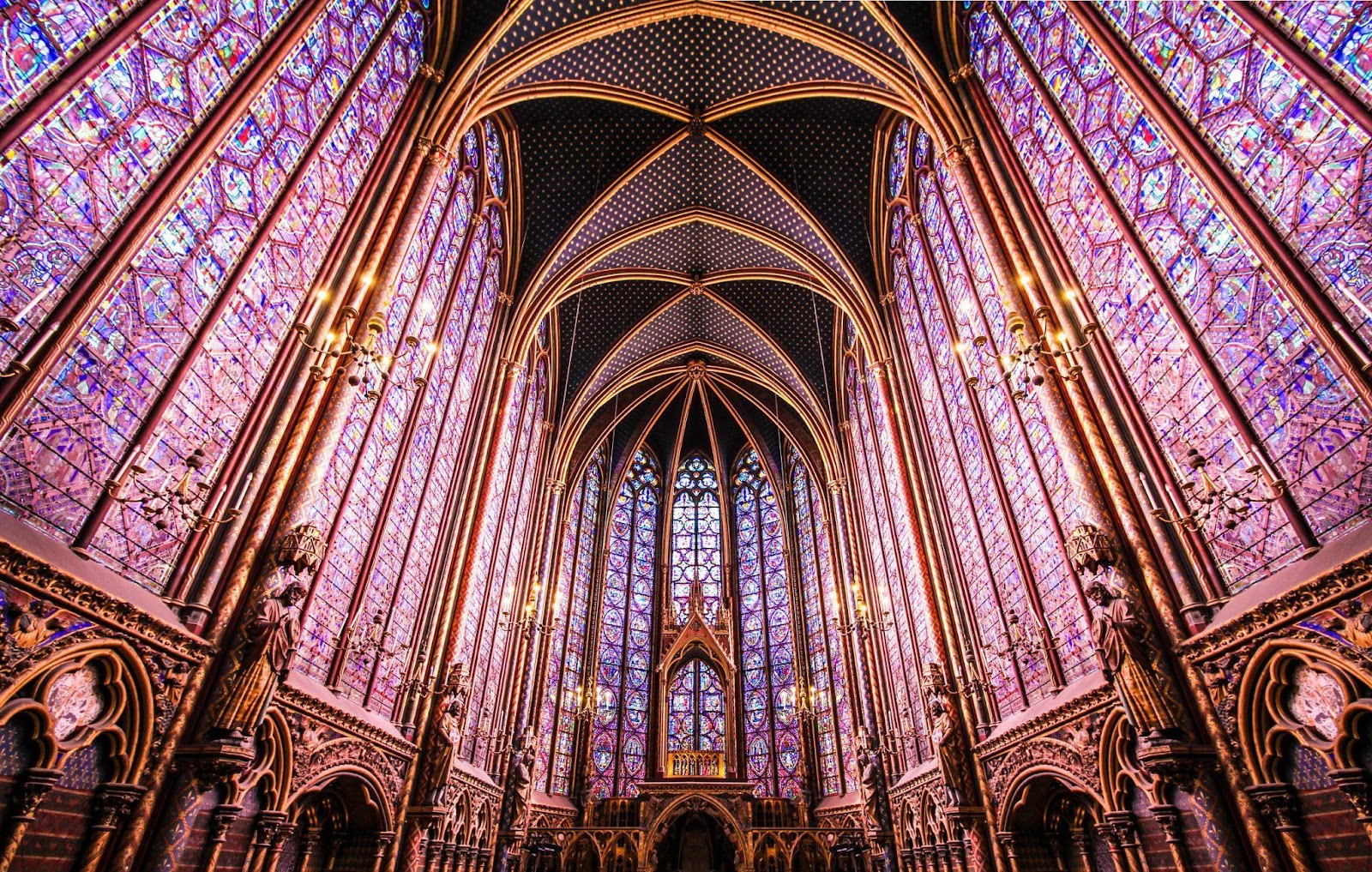
The powerful story behind the Sainte-Chapelle, a must-visit monument among the landmarks in France, is that King Lousin IX of France was later canonized as Saint Louis wanted to build a personal royal chapel, the King ordered the construction of the Chapel to house some of the most sacred Christian relics in existence, particularly to house the “Crown of Thorns” believed to be worn by Jesus Christ. The construction has less to do with the spiritual beliefs, but rather to display the power of the French king. The king saw it as the best investment for both spiritual and political reasons to position Paris as a new Jerusalem. One of the most significant features of the chapel is its stained glass. Emphasizing light and verticality, the church is a masterwork of Rayonnant Gothic architecture. Celebrated for its 15 soaring stained glass windows, which show over 1,100 biblical images and transform light into a tale of divine history, its top chapel, designated for the royal family, one of the most magnificent Gothic sanctuaries in the world, Sainte-Chapelle is a spiritual and artistic achievement of medieval France despite centuries of upheaval, devastation, and repair. If you are a history lover, visiting these landmarks in France can aid you to understand the underlying culture of French people.Â
Interesting facts
- More than 1000 stained glass present in the chapel, each piece of glass has its own story.Â
- Saint-Chapella once housed around 22 relics, but it now has only 3 after being destroyed by the French revolutionariesÂ
- The famous rose window shows the end of the world
The Palace that witnessed a Revolution: Inside the Story of Luxembourg
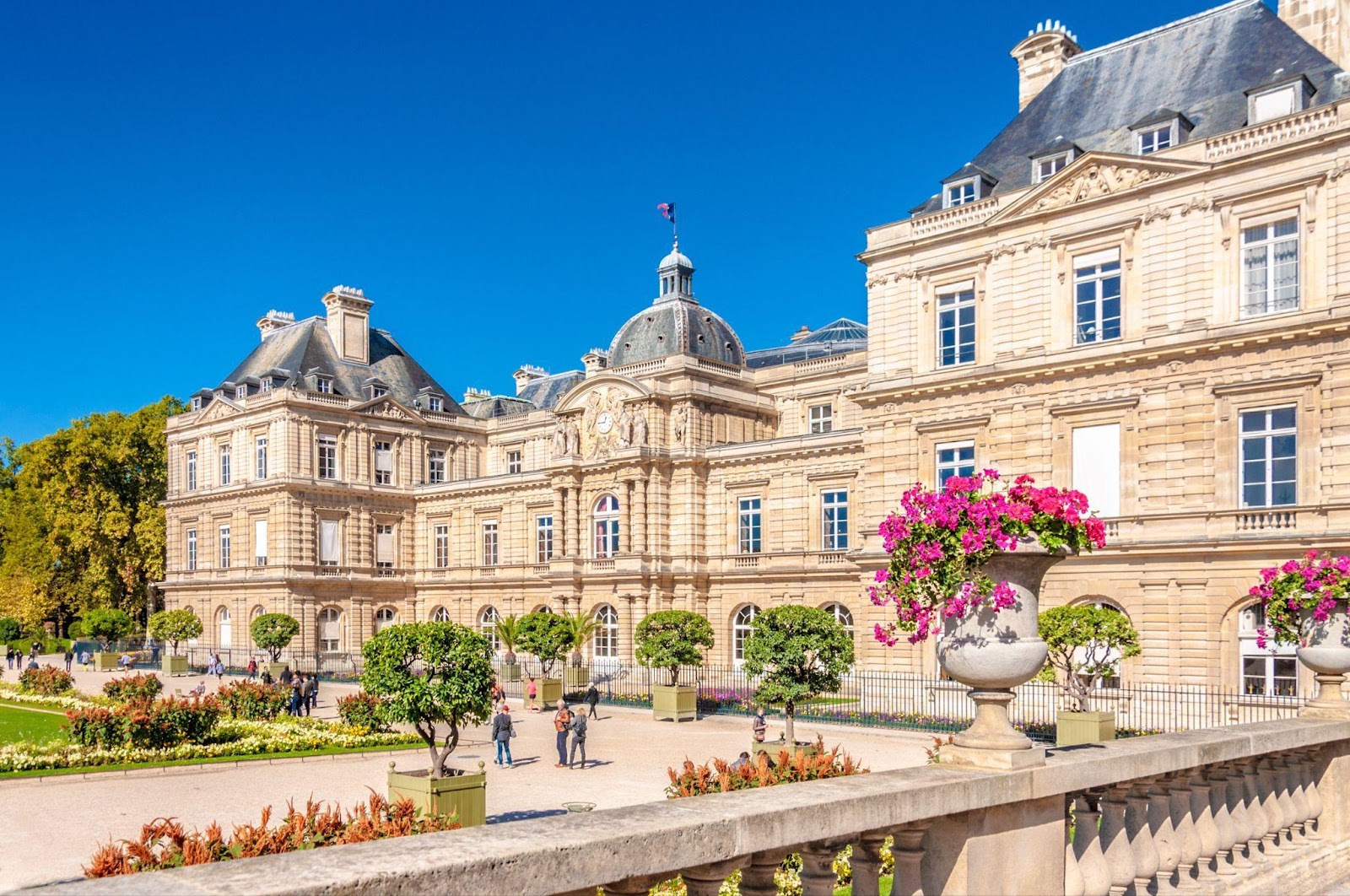
A queen’s vision to build a home very similar to her homeland, which later became the prison for the French Revolution, little did Marie de’ Medici, the Italian-born widow of King Henry IV of France, know that her desire to build a home would become the house of fear for the blue blood in France and later will become one of the most sorted landmarks in France to tell their story. Marie de’ Medici, commissioned to build this palace inspired by the Pitti Palace in Florence, her childhood home, to reflect her Italian roots and royal status. The role shifts often, representing the power shift over the period of their times. Marie de’ Medici was exiled by her son, Louis Xlll, and during the French Revolution, it became the prison and in the 19th century it became the seat of power again, this time for the people. Since 1879, it has been the house of the French Senate. Among the monuments in France, Luxembourg Palace stands a the house of power throughout history. Â
Interesting facts
- Luxembourg Gardens are the largest in Paris
- Luxembourg Garden is called the palace of changing fortunes.Â
Arc de Triomphe Paris: Symbol of France’s Military Glory and National Pride
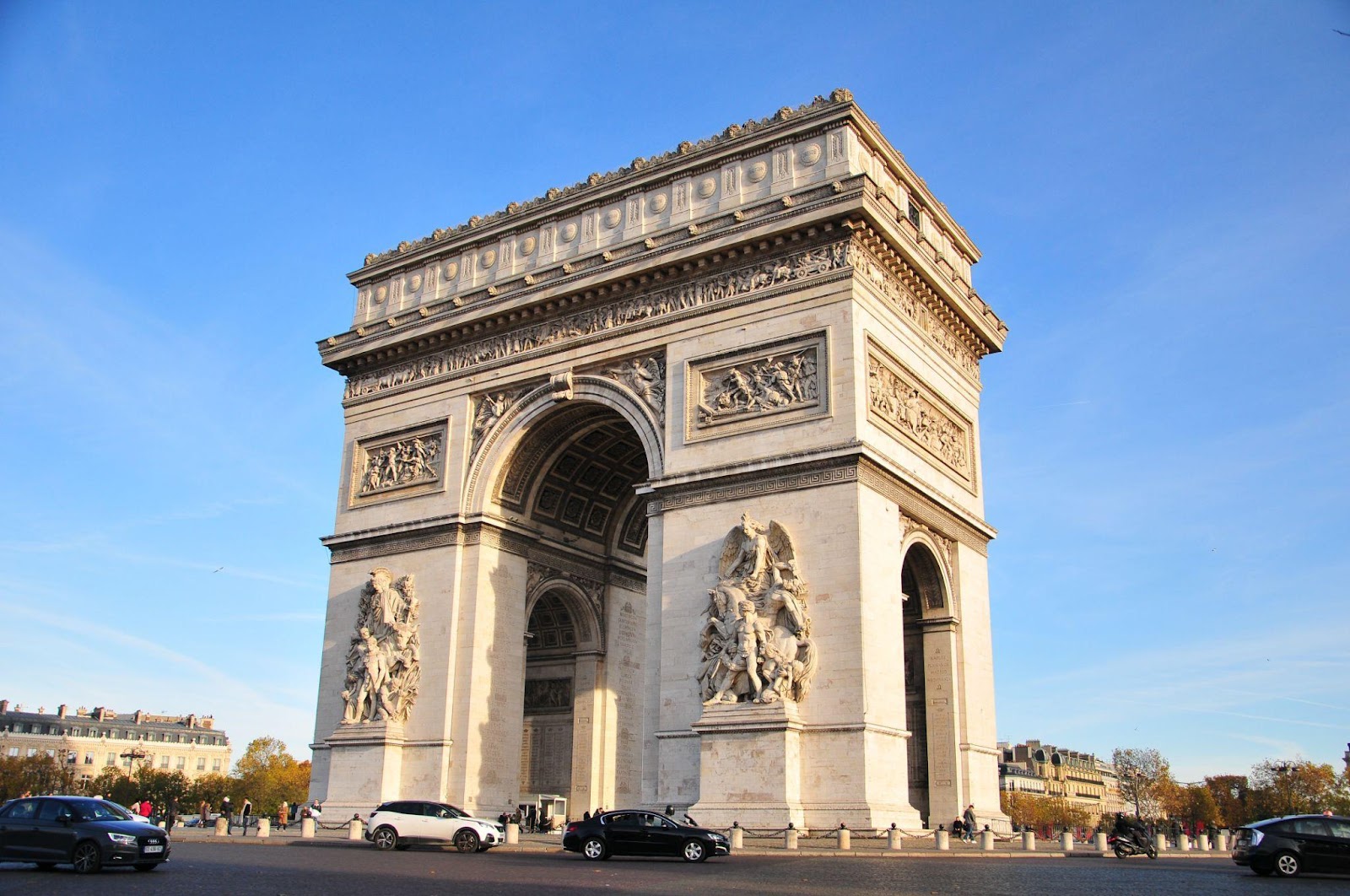
The Arc is the symbol of France’s military glory. The arc consists of the names of victories and generals inscribed, and beneath its vault lies the Tomb of the Unknown Soldier, whose eternal flame of honor has been honored. The Arc de Triomphe was commissioned by Nepolean in 1806 to celebrate the Grande ArmĂ©e. The Arc de Triomphe was designed by Jean-François-ThĂ©rèse Chalgrin in the neoclassical style, inspired by the Roman Arch of Titus. One big reason for tourists to visit the in Paris is that by climbing the 284 steps, you’re rewarded with one of the most beautiful views in the city. You can see the Champs-ÉlysĂ©es, the Eiffel Tower and La DĂ©fense, all the historic landmarks in France giving the tourists a perfect symmetry of Paris’s historic layout. Whether you’re a history enthusiast, these monuments in France can give you a unique experience of reliving the moments.Â
Interesting facts
- The Arc de Triomphe was commissioned by Nepolean, but he never saw it
- An anonymous soldier is buried under the arc
- A plane flew straight through the arc
Palace of Versailles: France’s Royal Masterpiece
The palace of Versailles stands as a crown jewel monument among all the monuments in France that narrates the chronicles of French history, offering an unparalleled journey through centuries of political power, architectural achievement, and social change in the history of France. The palace was originally a modest hunting lodge for Louis XIV, but was later transformed by Louis XIV the “Sun King” into a symbol of absolute power. The Palace of Versailles is an important landmark in France that stages many pivotal events, from its lavish court ceremonies to the final outbreak of the French Revolution, which eventually ended the monarchy of France. The palace not only boosts its architecture but has witnessed the rise and fall of dynasties making it an essential monument among the landmarks in France that must be visited by history lovers.
Interesting facts
- The palace was originally a hunting lodge. The smell of the Palace was too strong, making its visitors very sick.
- Hot chocolate was the drink of the palaceÂ
- The king ate cold meals because the distance from the kitchen to the dining room was too far
- The palace once housed wild animals and birds from all over the world.Â
As you walk through the heart of Paris, it’s a city more than what we see now; the city has its deep history and story, making it one of the most visited cities in Europe every year. France is not only home to beautiful coastlines, wineries, and mountains, but they are home to one of the countries with a rich history and culture. Visiting these 5 landmarks in France isn’t just sightseeing, but it gives you an experience to travel through time, having a look at their empires, revolution, and their modern rebirth. From architectural excellence, the Eiffel Tower, to that of the Palace of Versailles, these monuments in France has reshaped the history of French politics, making it as one of the must-see places for history lovers. To go further into history, think about stopping at the Pantheon, Notre-Dame Cathedral, or the Conciergerie. Plotting these on a map will enable your France vacation to become a self-guided historical tour under direction.
Therefore, when you visit, do not only search; also, glance back. Every stone, every stained glass panel, every panoramic perspective reveals a piece of the past that will enable you to write your chapter in it.






